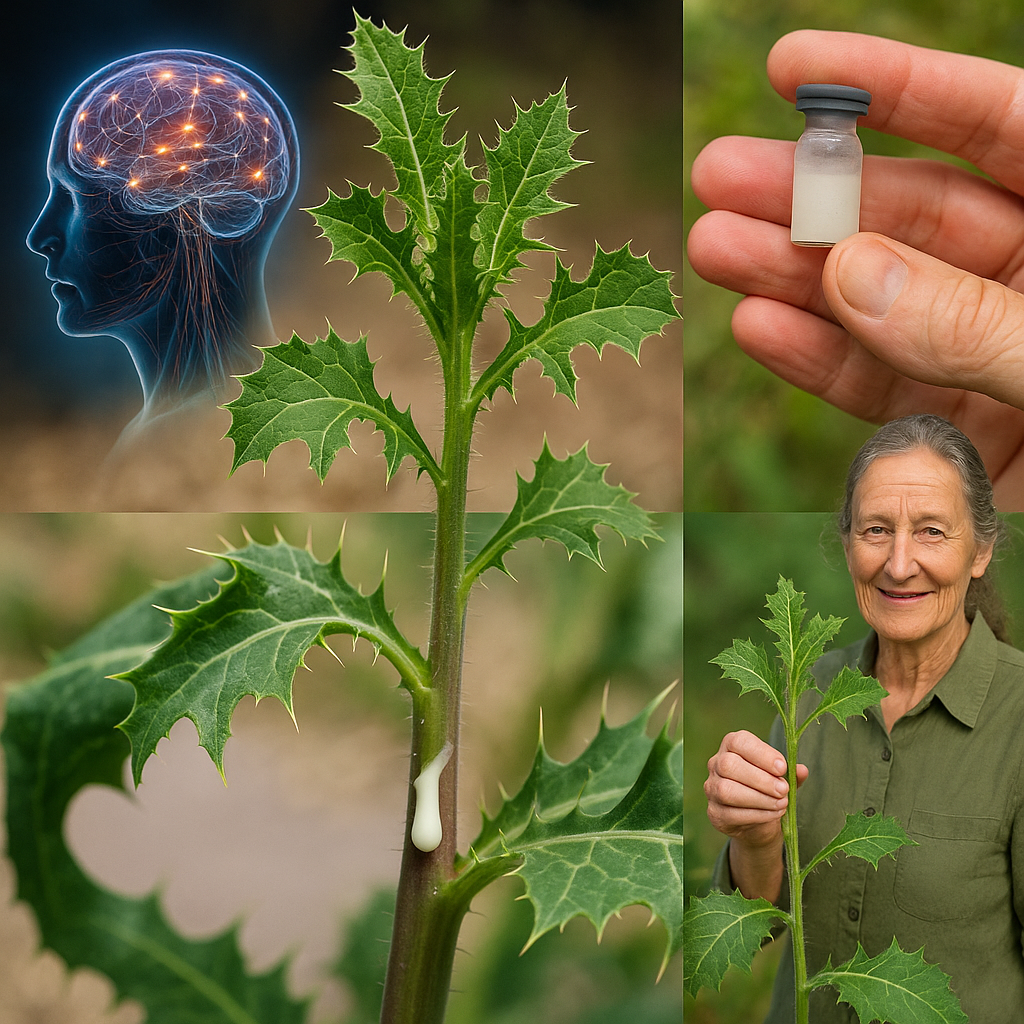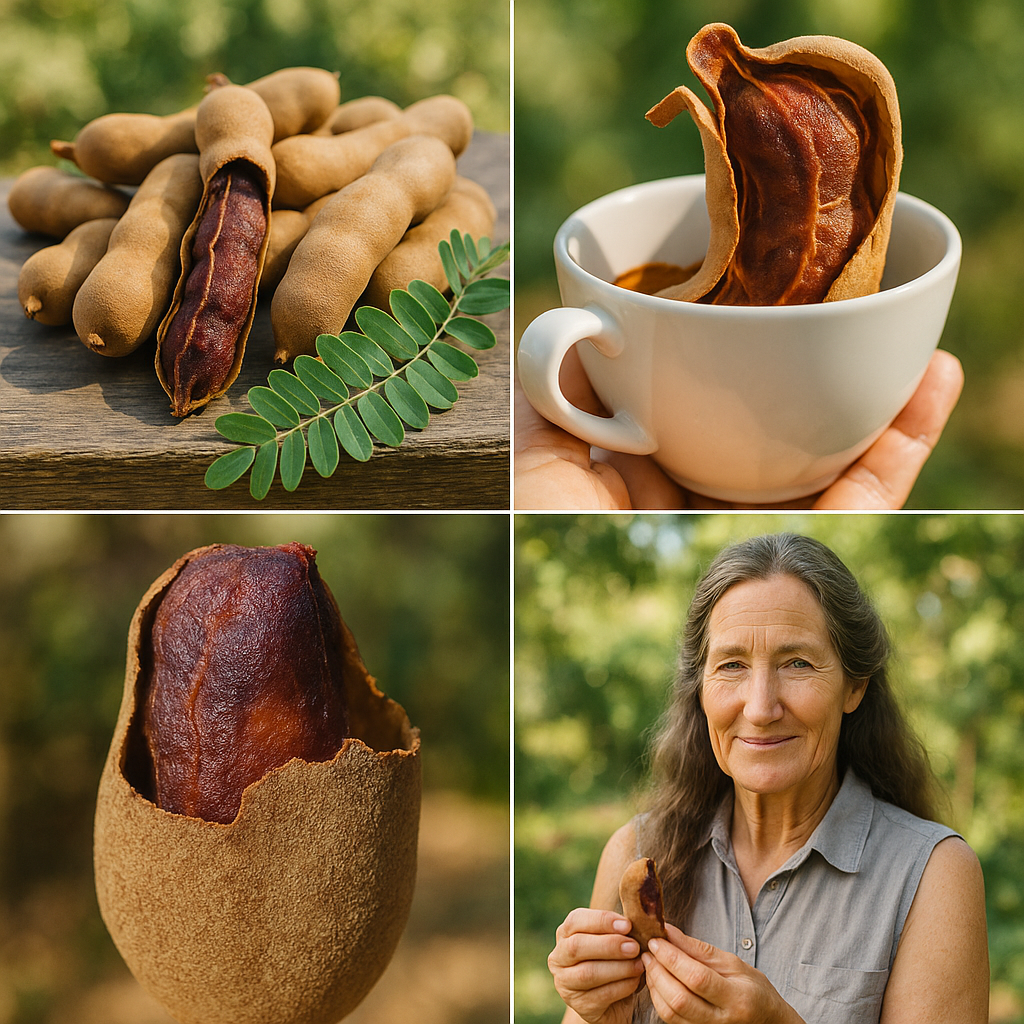Known as “opium lettuce,” wild lettuce (Lactuca virosa) has a long legacy as a traditional remedy for natural pain relief, mild sedation, and relaxation. While it contains no actual opiates, the milky white sap—called lactucarium—has earned a reputation for its gentle, calming effects and mild analgesic properties.
If you’ve spotted this towering plant along roadsides or in fields and wondered about its value, this guide will walk you through identification, harvesting, preparation, and safe usage of this powerful wild ally.

🌱 What Is Wild Lettuce Sap?
Lactucarium is the dried sap found inside the stems and leaves of wild lettuce. When cut or broken, the plant releases this bitter, white fluid, which air-dries into a brown resin. This is the part traditionally used for its pain-relieving and sleep-promoting effects.
Despite its nickname, wild lettuce is non-addictive and does not contain opiates, though its effects have been compared to a milder version of opium’s calming properties.
🔍 How to Identify Wild Lettuce
- Height: Grows up to 6 feet tall
- Leaves: Blue-green, deeply lobed, sometimes prickly on the underside
- Stems: Hollow, thick, and release white sap when cut
- Habitat: Found in disturbed soils, roadsides, open fields, or the edge of forests
- Flowers: Small, yellow dandelion-like blooms in summer
Make sure not to confuse it with other species like prickly lettuce (Lactuca serriola) or other non-medicinal wild greens.
✂️ How to Collect Wild Lettuce Sap
Step-by-Step Collection Process:
- Choose a mature plant: Older plants, especially in late summer, yield more potent sap.
- Use a clean, sharp knife to cut the main stem near the base.
- Collect the sap as it begins to ooze out—scrape it onto a clean glass plate or spoon.
- Make additional shallow cuts higher on the plant to encourage further flow.
- Let the sap air-dry into a sticky brown resin.
- Store in an airtight glass jar in a cool, dry place.
⚠️ Always wear gloves. The sap is bitter, sticky, and can stain or irritate skin.
💊 Traditional Uses of Wild Lettuce Sap
Used for centuries as a folk remedy, lactucarium was prized by herbalists and even listed in 19th-century pharmacopeias. Common applications include:
- Mild pain relief: Headaches, backaches, minor joint or muscle discomfort
- Calming nerves: For restlessness or anxiety
- Sleep support: Especially for occasional insomnia
- Cough and throat relief: Due to its mild antitussive effects
- Mild euphoria or relaxation: Reported by some users, though subtle
☕ How to Use Wild Lettuce Sap
1. Tincture Method (Recommended)
- Mix dried sap with 40–50% alcohol (vodka or brandy) in a ratio of 1:5.
- Let steep in a sealed jar for 2–4 weeks, shaking occasionally.
- Strain into a dropper bottle.
- Start with 1–2 drops diluted in water or juice, gradually increasing if tolerated.
2. Direct Consumption (Advanced Use Only)
- A tiny amount (rice-grain-sized) of dried sap can be dissolved in tea or under the tongue.
- Not recommended for beginners due to potency and bitter taste.
3. Topical Use for Soreness
- Mix with a carrier oil (e.g., coconut or olive oil) to make a salve for sore muscles or joints.
- Apply externally only—avoid broken skin or open wounds.
4. Wild Lettuce Tea (Leaves, Not Sap)
- Boil 1–2 tsp of dried leaves in 1.5 cups water.
- Steep 10–15 minutes, then strain.
- Drink before bed to support sleep or relaxation.
Note: The sap is not usually brewed as tea—it’s too bitter and sticky.

⚠️ Safety Considerations
While generally considered safe in small doses, wild lettuce sap is potent and should be used with care.
- Start with the smallest dose possible
- Do not combine with sedatives, alcohol, or medications without consulting a doctor
- Not recommended for:
- Pregnant or breastfeeding women
- Children
- People with liver or kidney disorders
- Anyone on prescription sedatives or anticoagulants
Overuse may cause: nausea, dizziness, or drowsiness.
📦 Storing Wild Lettuce Sap
- Store the dried sap in a dark, airtight glass container
- Keep it in a cool, dry place—avoid humidity
- Label with collection date and plant species for reference
🌿 Final Thoughts: A Forgotten Ally with Timeless Value
Wild lettuce sap may not be well-known in modern medicine, but it holds a respected place in herbal tradition for its gentle sedative and analgesic effects. As with all herbal remedies, moderation, preparation, and education are key to using it effectively and safely.
If you’re exploring the world of natural pain management, wild lettuce sap is a potent, wild-grown remedy worth knowing about.
Disclaimer: This information is for educational purposes only. Consult a qualified healthcare professional before beginning any herbal regimen, especially if you have underlying health conditions or take medications.


